GLOBULARIOIDES ssp. GLOBULARIOIDES
Synonyms :
Crassula globularioides fa globularioides
Crassula nyikensis Baker fil. (1897)
Crassula liebuschiana Engler (1907)
Crassula globularioides fa longiciliata Fernandes (1978)
Crassula globularioides fa pilosa Fernandes (1978)
Distribution : S and C Malawi, grantie rocks in grasslands, 1300 - 3000 m.
First Description by Britten, Flora of Tropical Africa, 1871 :
Rhizome thick, creeping, emitting short leafy shoots barren or bearing peduncles.
Barren shoots terminating in a rosette of leaves.
Leaves obovate-lanceolate, sometimes almost orbicular, 1/2 inch long or rather more, on flowering shoots opposite, connate, internodes scarcely perceptible, fleshy, glabrous, obtuse, closely fringed with white membranous deflexed teeth.
Scape papillose, simple, 2-3 in. high, with two pairs of connate, lanceolate, obtuse or subacute bracts, fringed like the leaves, one pair near the base, the other shortly below the inflorescence.
Flowers in compact, rounded, terminal cymes, or in subdense forking panicles, very shortly pedicellate, bracteoles linear-lanceolate.
Calyx about 1 line long, fringed like the leaves, segments lanceolate, obtuse.
Corolla twice as long as the calyx, petals free or scarcely united at the base, thick, ovate-lanceolate, obtuse, ascending, slightly spreading.
Carpels dark, ovate, acuminate. Squamulae minute.
Description by R. Fernandes in Flora Zambesica, 1983 :
A dwarf undershrub up to 13(20) cm. high, forming small compact mats, with a much branched woody rootstock.
Branches short, up to 5 mm. in diam., leafless, blackish and with lower parts covered by the persistent, dry sheaths of the old leaves, reddish and leafy along the terminal 1·5-6·5(15) cm.
Leaves up to 2·2 x 1·2 cm., oblong to oblong- or subcircular-obovate, usually obtuse at the apex, entire and ciliate at the margin (cilia rigid, white), slightly attenuate or contracted at the broad base, flat, ± succulent and green tinged red when fresh, turning somewhat rigid, thin and reddish-brown to nearly black on drying, usually glabrous on both sides, sessile, usually 4-ranked and ± condensed (rosettes up to 4·5 cm. in diameter, sometimes nearly spherical) or somewhat scattered and decussate along the stem but always longer than the internodes, erect or ± spreading.
Peduncle 1-8 cm. long, erect, slender, retrorsely appressed papillose-hairy, with two pairs of opposite, connate at base, oblong, obtuse or subacute ciliate bracts, one pair between the base and the middle of the peduncle, the other below the inflorescence; pedicels up to 2·5 mm. long.
Flowers 5-merous in terminal, dichotomous, corymbose or sometimes dense and globular inflorescences, 1-5 cm. in diameter. Calyx (2)2·5-3 mm. long, half as long as corolla or more; sepals (1)1·5-1·75 mm. broad, triangular or lanceolate, attenuate towards the acute apex, keeled, ciliate at the margin and along the keel (cilia ± rigid, acute, spreading, white, ± scattered). Corolla 4-5 mm. long, white; petals oblong-obovate to broadly ovate-elliptical, obtuse to nearly acute, shortly mucronate below the apex, fleshy, smooth, erect or slightly spreading or reflexed at the top. Filaments 1·5-2·25 mm. long; anthers 0·5-0·75 mm. long. Follicles (with styles) 2·5-3 mm. long. Scales 0·4-0·6 x 0·3-0·4 mm., subrectangular, truncate or emarginate at the top, purple.
"The forms based on leaf characters (hairiness, length of marginal cilia) are synonymized here provisionally. C. nyikensis is said to differ in the smaller, thinner and more densely arranged leaves which persist on old branches, and an inflorescence that is leafy from base to apex (Fernandes 1983: 33)" - E.van Jaarsveld in IHSP, 2003.
Plants in habitat :
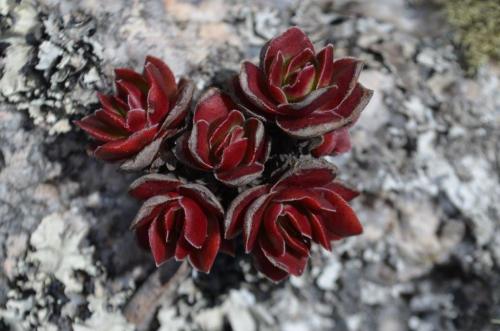
Photo Petr Pavelka
Plants in cultivation :
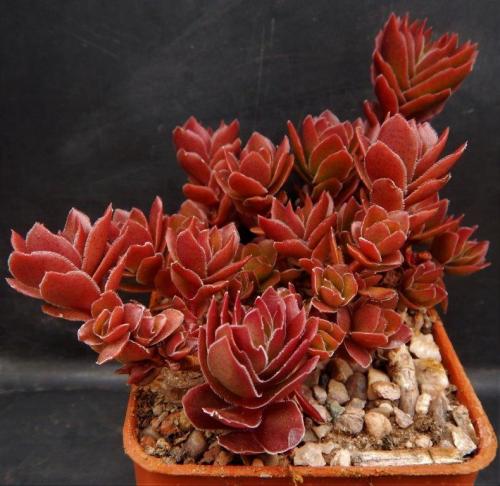
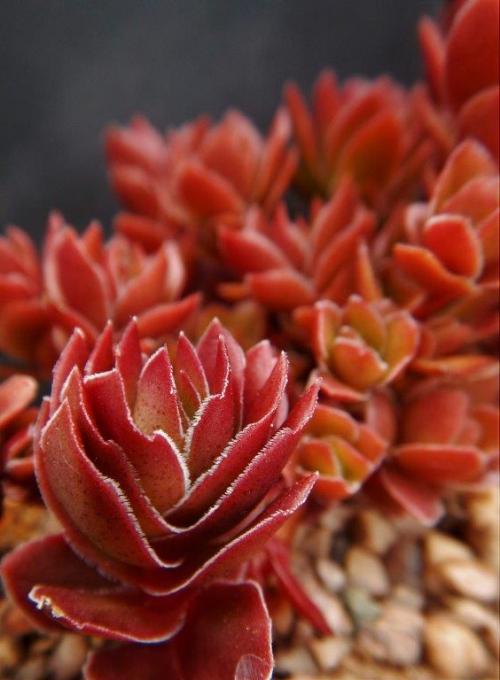
Photos Chris Rodgerson
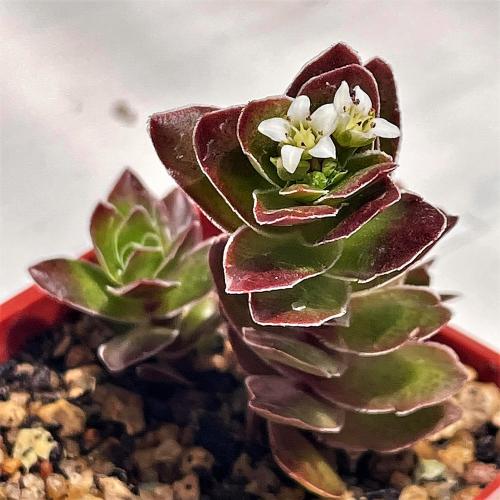
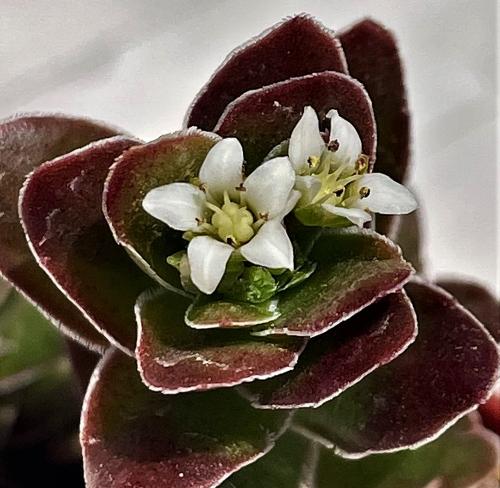
Photos Yael Gayer